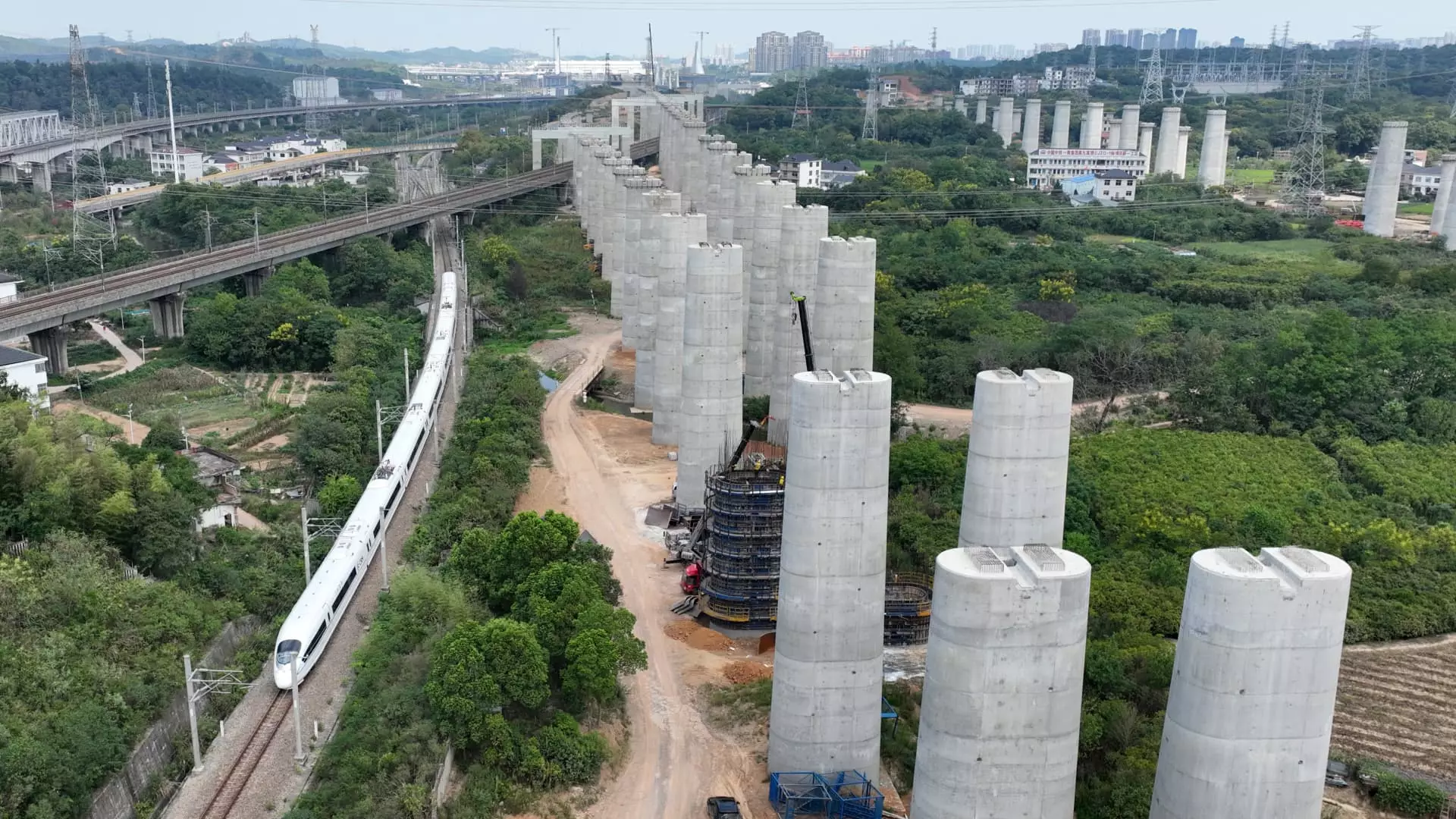China’s economy, often regarded as a powerhouse of growth, currently finds itself in a precarious situation. The stagnation of consumer demand is revealing deep-seated issues tied to the plummeting real estate market, which is intricately linked to local government finances and escalating debt levels. What might appear as merely a hiccup on the path of progress is, in fact, a reflection of systemic vulnerabilities that could impact economic stability for years to come.
The over-reliance of Chinese households on real estate investment over the last twenty years created a significant bubble that has now begun to burst. The government, recognizing the potential for catastrophe, initiated a crackdown on developers who heavily leveraged debt in 2020. This policy shift has precipitated a decrease in property values and a substantial reduction in land purchases by developers. As a direct result, local governments—especially those at the district and county levels—are now grappling with a sharp decline in revenue.
According to analysts from S&P Global Ratings, local governments might need anywhere from three to five years to stabilize their finances. This timeframe reflects a painful and drawn-out recovery process. Wenyin Huang, a director at S&P, highlights that the ongoing macroeconomic headwinds further impede revenue generation from critical sources like taxes and land sales. The repercussions of this financial squeeze are not limited to the public sector; they reverberate across the private sector as businesses, confronted with their own challenges, become reluctant to hire or invest in wage increases, thereby perpetuating a cycle of consumer uncertainties regarding future earnings.
What is particularly alarming is the recent push by local authorities to reclaim unpaid taxes, some dating back to the mid-1990s. This clampdown includes businesses facing hefty invoices for historical tax miscalculations, ranging between millions and hundreds of millions of yuan. This is not just an isolated phenomenon but a systemic issue that undermines the very fabric of business confidence in the country. A stark example is found in Zhejiang province, where one firm was ordered to repay approximately 300 million yuan due to reclassification of its products.
These measures have created an uproar among businesses, furiously questioning the motives and timing of such recalls. They echo a desperate attempt by local governments to replenish their dwindling coffers amidst drying up revenue streams. Observations made by Camille Boullenois of Rhodium Group reveal an unsettling truth: the urgency to recover taxes from several years ago is a clear indicator of the increasing financial strain.
Economic indicators continue to paint a grim picture. The CKGSB Business Conditions Index has remained stagnant around the contraction threshold of 50, indicating that businesses are bracing for tougher times ahead. August’s recorded dip to 48.6 only solidifies fears that recovery is a distant prospect, while retail sales have only modestly improved since the onset of the COVID-19 pandemic, further accentuating the hesitance to spend among consumers.
The national taxation administration has attempted to downplay the scope of these retroactive tax measures, asserting that they are being executed in compliance with the law. However, the scale of these actions has intensified fears of a broader wave of tax reassessments that could stifle economic activity and sour business sentiment even further.
One of the more pressing challenges government officials face is how to stimulate economic growth without escalating debt levels beyond sustainable limits. The shift towards a consumption-driven growth model has proven complex, especially as local government entities—often reliant on debt for infrastructure development—grapple with the repercussions of previous investment-driven strategies that have yielded limited returns.
Analysts from Morgan Stanley have pointed out that efforts to de-leverage the economy could lead to similar pitfalls experienced during earlier economic correction measures from 2012 to 2016. They emphasize that unless decisive action is taken to pivot from investment dependency toward sustainable consumption growth, the economic outlook remains precarious. As of now, debt-to-GDP ratios have soared alarmingly to around 310% and are anticipated to rise further.
China stands at a crossroads where immediate action is essential to avert long-term economic distress. Local government financing vehicles—often underestimated in terms of their potential risks—pose a significant threat to fiscal stability, eliciting concerns within financial circles. Unless a pragmatic approach is adopted to untangle the complex web of local government debt and reinvigorate consumer confidence, the path to recovery will remain fraught with challenges.
In essence, China’s economic landscape is more fragile than it appears. The intricate interplay of real estate fluctuations, local government finance dilemmas, and the ongoing struggle for revenue will require innovative policy responses and effective governance to ensure that the world’s second-largest economy can navigate this turbulent phase without succumbing to its systemic vulnerabilities.

